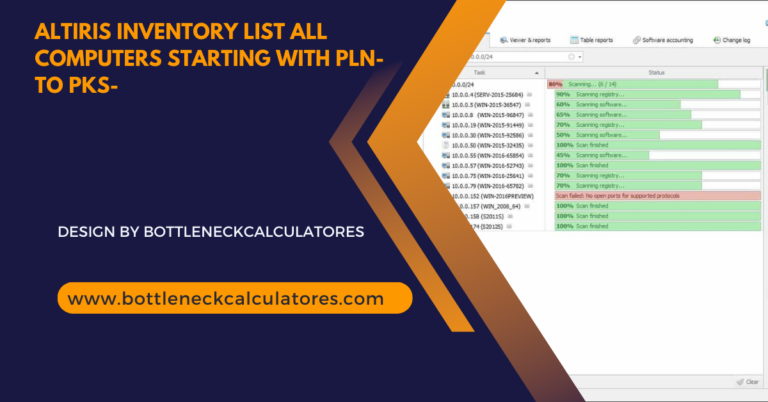Nzxt Cam And Ryzen Master Showing Different Cpu Temps – Ryzen Master Accuracy Guide!
NZXT CAM and Ryzen Master show different CPU temperatures because they use different sensors and data interpretation methods. Ryzen Master is more accurate for AMD CPUs, while NZXT CAM provides generalized readings.
In this article, we’ll dive into why this discrepancy happens, how these tools work, and what you should do about it.
Table of Contents
Understanding CPU Temperature Monitoring:
To effectively compare NZXT CAM and Ryzen Master, it’s crucial to understand how CPU temperature monitoring works. Your CPU contains multiple sensors, each designed to track different aspects of its thermal behavior. Monitoring tools interpret these sensor readings differently, resulting in variations in reported temperatures.
CPU Sensors Explained:
Ryzen CPUs, like those in AMD’s Ryzen series, have multiple temperature sensors embedded within the chip.
The most commonly referenced are:
- T-die (Die Temperature): Measures the temperature of the silicon die.
- T-junction (Junction Temperature): Refers to the peak temperature at specific critical areas of the CPU.
- Socket Temperature: Measures the temperature at the CPU socket on the motherboard.
How NZXT CAM and Ryzen Master Work?
NZXT CAM:
This third-party hardware monitoring tool is often included with NZXT products like Kraken AIO coolers. It retrieves sensor data through standardized APIs from Windows or your motherboard, providing a broad overview of your system’s performance. While its interface is user-friendly and visually appealing, the temperature readings are generalized, relying on averages or approximations that may not capture real-time CPU core specifics.
Ryzen Master:
AMD’s official monitoring software is tailored exclusively for Ryzen CPUs, ensuring highly precise temperature readings. By directly accessing the processor’s on-die sensors, Ryzen Master focuses on the T-junction temperature, which represents the most critical core temperature. It’s optimized to reflect the exact thermal behavior of Ryzen CPUs, making it indispensable for accurate and real-time monitoring.
Why Are Temperatures Different?
Different Sensor Priorities:
Ryzen Master accesses the T-junction sensor directly, providing precise core temperature measurements. NZXT CAM may instead use motherboard-supplied or averaged data, leading to variations. This reliance on different data sources can create noticeable differences in reported values. Additionally, the accuracy of motherboard sensors can vary by manufacturer and model. Understanding which sensor each tool prioritizes helps identify the root of discrepancies.
Polling Intervals and Refresh Rates:
Ryzen Master often updates its readings in near real-time for accurate monitoring. NZXT CAM may have slower polling rates, causing minor delays in displaying temperature changes. This means rapid temperature spikes might be missed by NZXT CAM. The tools’ design priorities, such as balancing performance with resource usage, further influence their refresh behavior.
Motherboard Interference:
Motherboards sometimes adjust sensor data for their reporting algorithms, which NZXT CAM might use. Ryzen Master bypasses this by communicating directly with the CPU, ensuring unaltered readings. These adjustments might include adding offsets for safety margins or cooling profiles. Users should consider motherboard-specific quirks when analyzing temperature data.
Background Processes:
Simultaneously running multiple monitoring tools can lead to data conflicts or one tool showing outdated information. This overlap creates confusion and contributes to inconsistent temperature readings across software. Excessive polling by multiple tools can also strain system resources, further affecting accuracy. Prioritizing a single tool for monitoring helps minimize such issues.
How to Minimize Temperature Discrepancies?
While some variation between monitoring tools is normal, you can take steps to reduce inconsistencies:
Use Only One Monitoring Tool:
For the most accurate results, rely on Ryzen Master for Ryzen CPUs. Avoid running multiple monitoring programs at the same time to prevent conflicts.
Keep Software Updated:
Ensure both NZXT CAM and Ryzen Master are running the latest versions. Updates often include bug fixes and compatibility improvements that can resolve discrepancies.
Check BIOS Settings:
Your motherboard’s BIOS settings might influence temperature readings. Updating your BIOS or ensuring proper sensor calibration can help align readings across tools.
Verify Hardware Cooling:
Discrepancies might also indicate cooling issues, such as:
- Poor thermal paste application
- Inadequate airflow in the case
- Malfunctioning cooling solutions, like a faulty AIO pump or fan.
When to Be Concerned About CPU Temperatures
While small discrepancies (around 5-10°C) are generally harmless, larger differences or unusually high temperatures in one tool could indicate a potential issue. Here’s when to take action:
- High Idle Temperatures: If your CPU exceeds 50°C while idle, check your cooling setup.
- Thermal Throttling: If your CPU temperature exceeds its maximum safe range (typically 85-95°C for Ryzen CPUs), performance may suffer due to thermal throttling.
Which Tool Should You Trust?
For Ryzen CPUs, Ryzen Master is the most reliable monitoring tool. It is specifically optimized for AMD processors and offers real-time, highly accurate readings directly from the CPU core.
However, NZXT CAM remains useful for broader system monitoring, including GPU temperatures, fan speeds, and power usage. For critical CPU temperature monitoring, Ryzen Master should be your go-to software.
FAQ’s
1. Why do NZXT CAM and Ryzen Master show different CPU temperatures?
They use different sensors and data interpretation methods. Ryzen Master accesses the CPU’s T-junction sensor for precise readings, while NZXT CAM relies on generalized data from the motherboard.
2. Which tool is more accurate for Ryzen CPUs?
Ryzen Master is more accurate for Ryzen CPUs as it directly accesses on-die sensors, providing real-time and precise core temperature measurements.
3. How does motherboard interference affect temperature readings?
Motherboards may adjust sensor data for their algorithms, which NZXT CAM uses. Ryzen Master bypasses these adjustments, ensuring unaltered readings.
4. How can you minimize discrepancies between monitoring tools?
Use a single monitoring tool, keep the software updated, check BIOS settings, and ensure proper hardware cooling.
5. When should you be concerned about CPU temperatures?
Be concerned if idle temperatures exceed 50°C or if temperatures surpass 85-95°C, which could lead to thermal throttling.
Conclusion
The difference between NZXT CAM and Ryzen Master lies in how they interpret sensor data. Ryzen Master offers precise readings for Ryzen CPUs, making it more reliable. Focus on long-term temperature trends, not minor variations. Keep your software updated, ensure proper cooling, and use trusted tools to maintain system health and avoid unnecessary concerns over discrepancies.







